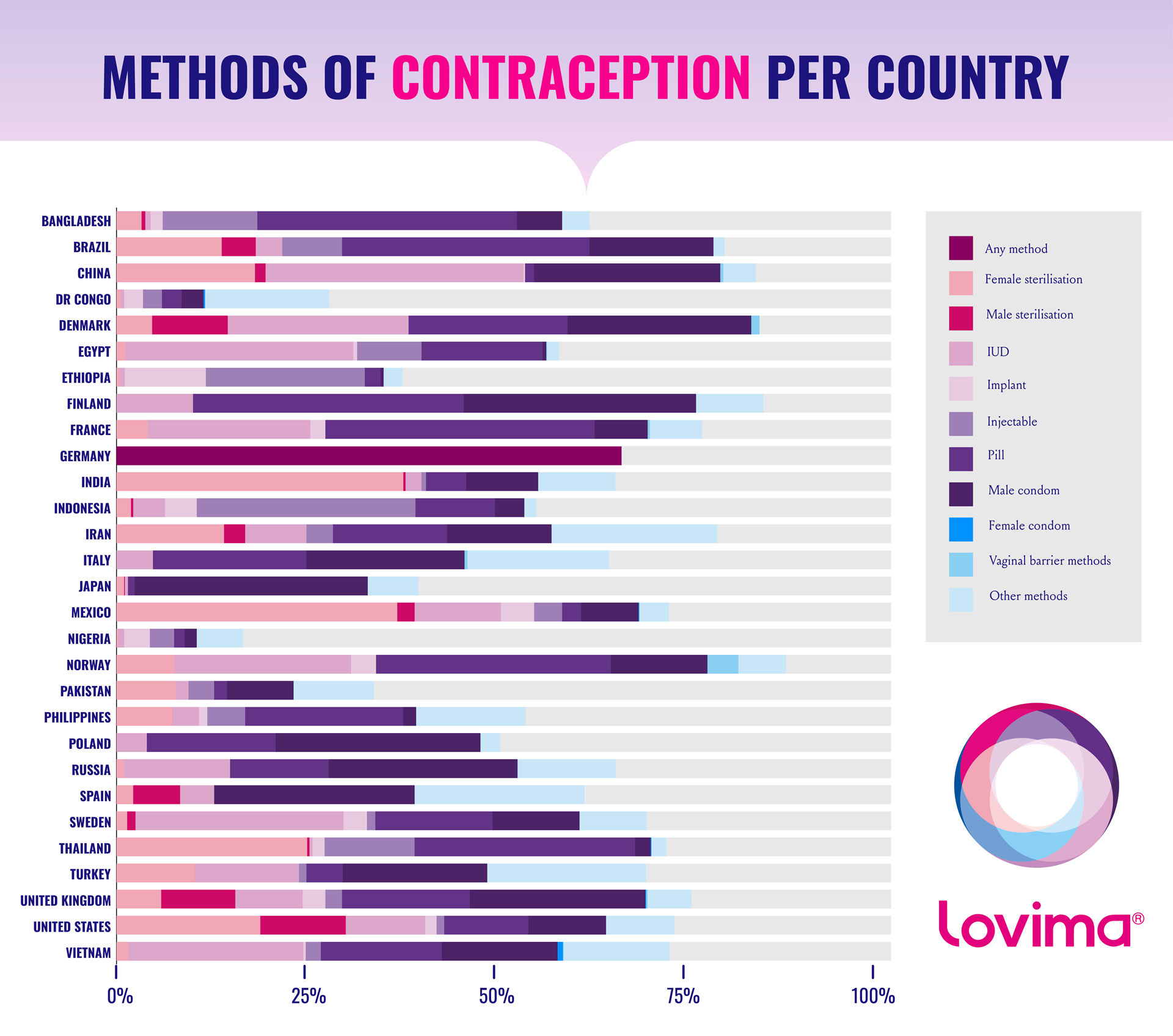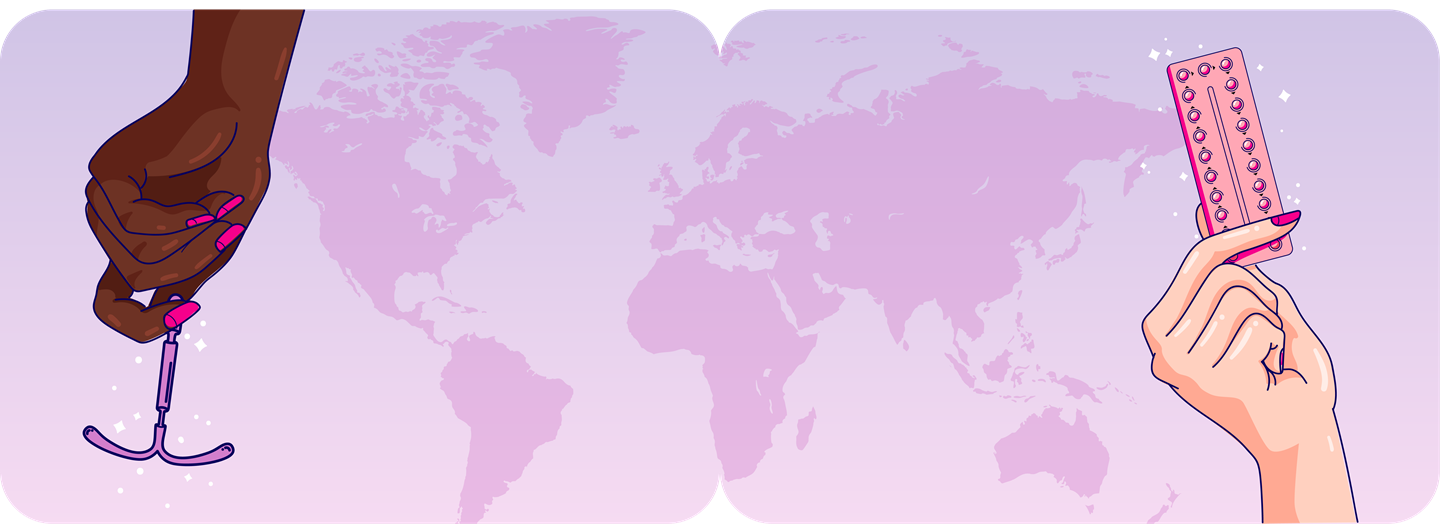Birth Control Around the World
Choice. It’s part of our every day. From what we eat for dinner each evening, to our personal style, and the people we hang out with. Having the right to choose how we do things can be something we take for granted.
Here in the UK, most women are lucky enough to choose their preferred method of birth control – whether that be natural planning, using condoms, or medicinal/hormonal options such as the contraceptive pill. And at Lovima, we are proud to be part of the revolution that’s made it easier for women to access the contraception pill when they need it from a pharmacy and online.
The World Health Organisation notes that preventing unintended pregnancies helps to reduce the number of pregnancy-related deaths and lower maternal ill-health. It also cuts the need for unsafe abortions and allows women and girls to participate more fully in education, employment, and wider society.
At Lovima, we believe in putting you in control of your contraception and increasing choice in how you access it. But the fact is, access to birth control and abortions differs significantly around the world.
We wanted to look at how different countries compare when it comes to these health services. To do this, we’ve created an interactive map featuring a selection of countries from across the world. You’ll find information on the accessibility of contraception, the availability of over-the-counter contraceptives, and details on abortion laws for each nation.
Availability and accessibility of contraception
In Great Britain, it’s easy to access various types of birth control, including over-the-counter (OTC) contraceptives such as the progestogen-only pill, also known as the ‘mini pill’.
However, women in many nations don’t have this level of choice and convenience. For example, in sub-Saharan Africa, only slightly more than half (56%) of the need for family planning is being met by modern methods of contraception. Meanwhile, Pakistan has one of the highest abortion rates in the world due to limited access to contraception, as well as a lack of sex education and awareness .
Abortion laws
You’ll also notice major differences in abortion laws around the world. Great Britain is one of the more liberal counties when it comes to pregnancy terminations. Under the Abortion Act 1967, women can access abortions for personal reasons up to 23 weeks and 6 days of pregnancy, and there is no gestational limit if there is evidence of significant risk to a woman’s life or a fatal foetal abnormality .
In contrast, Poland is one of many countries with much stricter rules. There, terminations are only legal if the pregnancy is a threat to the mother’s life, or if the pregnancy has resulted from incest or rape. The law is even more restrictive in the Philippines, where abortion is illegal in all cases, even if the mother’s life is at risk. Doctors and midwives who perform these procedures in the Philippines can face up to six years in prison, while the women themselves can be imprisoned for between two and six years.

Popularity and methods of contraception
As you can see from the bar chart above, the popularity of contraception and the types of birth control used also vary significantly between countries. Figures published by the United Nations Department of Economic and Social Affairs show that birth control use among women of childbearing age who are in relationships is highest in Norway (88.4%), followed closely by Finland (85.5%) and China (84.5%). At the other end of the scale, only 16.6% of Nigerian women in this category use contraception, while in the Democratic Republic of Congo the figure is only slightly higher at 28.1% and in Pakistan it’s 34%.
We believe that we should continue to champion the importance of expanding access to contraception to give women greater control over their bodies and their lives.
Want to share your own experiences or thoughts on contraception and family planning? Join the conversation with #GlobalBirthControl.
Sources:
https://www.webmd.com/sex/birth-control/ss/slideshow-birth-control-history https://www.healthline.com/health/birth-control/history-of-birth-control
https://www.who.int/health-topics/contraception#tab=tab_1
https://www.bbc.co.uk/news/world-us-canada-54513499
https://population.un.org/dataportal/home
https://www.bmj.com/content/367/bmj.l6712/rr
https://www.independent.co.uk/life-style/women/abortion-rights-uk-usa-bill-nhs-b2071339.html https://www.nhs.uk/conditions/abortion/#:~:text=When%20an%20abortion%20can%20be,born%20with%20a%20severe%20disability
https://www.amnesty.org/en/latest/news/2022/01/poland-regression-on-abortion-access-harms-women/
https://pinsan.ph/2017/05/birth-control-is-not-enough/
https://www.un.org/development/desa/pd/data/world-contraceptive-use
